✕
Once upon a time, radiant heating was sort of a niche solution, almost exclusively used in residential applications. But after years of advancements pertaining to the materials, technology, and install of radiant heating systems, they’ve become a lot more common. It’s now not only more efficient, but more cost-effective, too.
“This evolution, coupled with growing awareness of its benefits, has led to broader acceptance in the commercial sector,” said Hailey Mick, engineering business development manager at Uponor. “Today, radiant heating is widely recognized for its ability to provide consistent and comfortable heating while being energy efficient and environmentally friendly.”
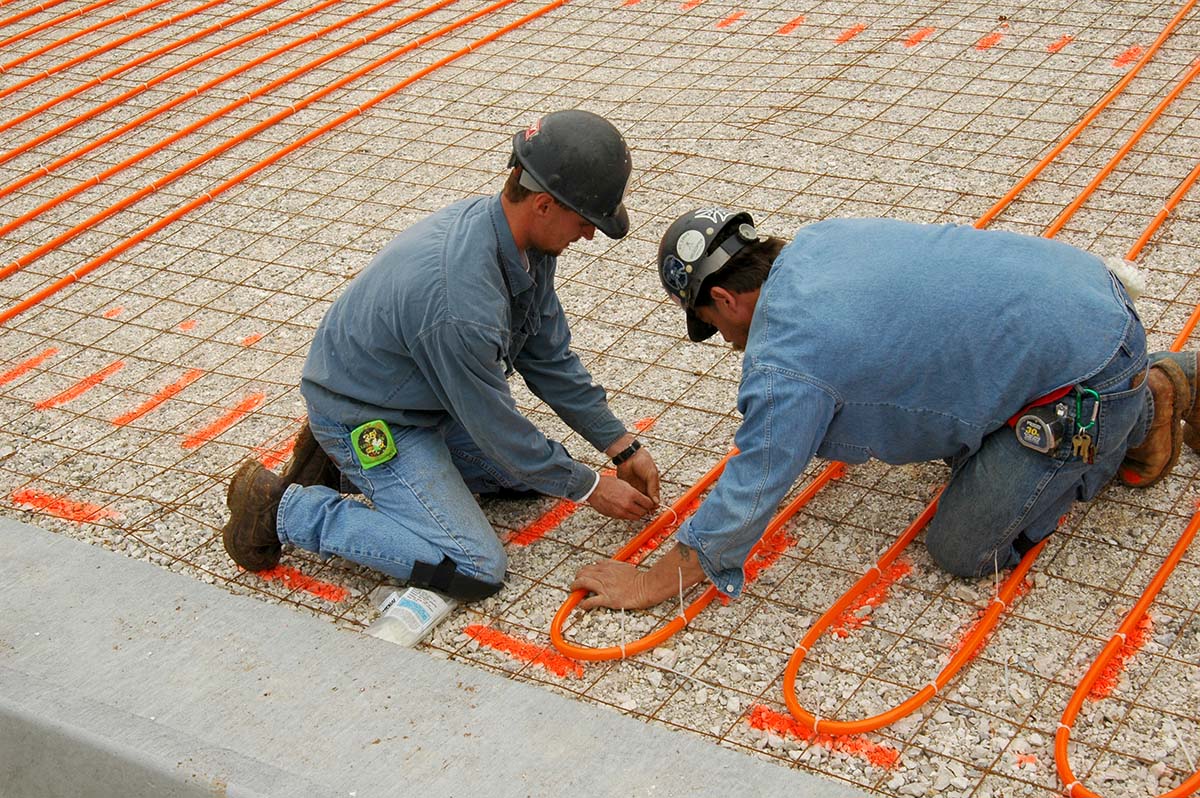
(Courtesy of Watts)
– Kolyn “Coach” Marshall
senior applications instructor, instructional design
Watts
Commercial Radiant Heating
This increasing popularity of radiant heating in commercial spaces can be widely attributed to an increased understanding of radiant heat in general, how to install the systems, and how they work.
“And word of mouth — people using it and saying that it works,” said Alex Warren, product manager, plastics, at Viega. “There’s a lot higher acceptance for cooling, especially in high humidity areas, and a lot of that also has to do with energy efficiency and long-term savings that customers can see in the building.”
More and more people are looking for systems that reduce energy consumption and the carbon footprint. This emphasis on energy efficiency and sustainability has also led to the growth of radiant heating in commercial spaces.
“Radiant heating systems excel in these areas due to their efficient heat distribution and lower operating temperatures,” Mick said. “Next, the enhanced comfort provided by radiant heating, which eliminates cold spots and drafts, is highly valued in commercial spaces. Lastly, technological advancements have made these systems more reliable and easier to install, further boosting their appeal.”
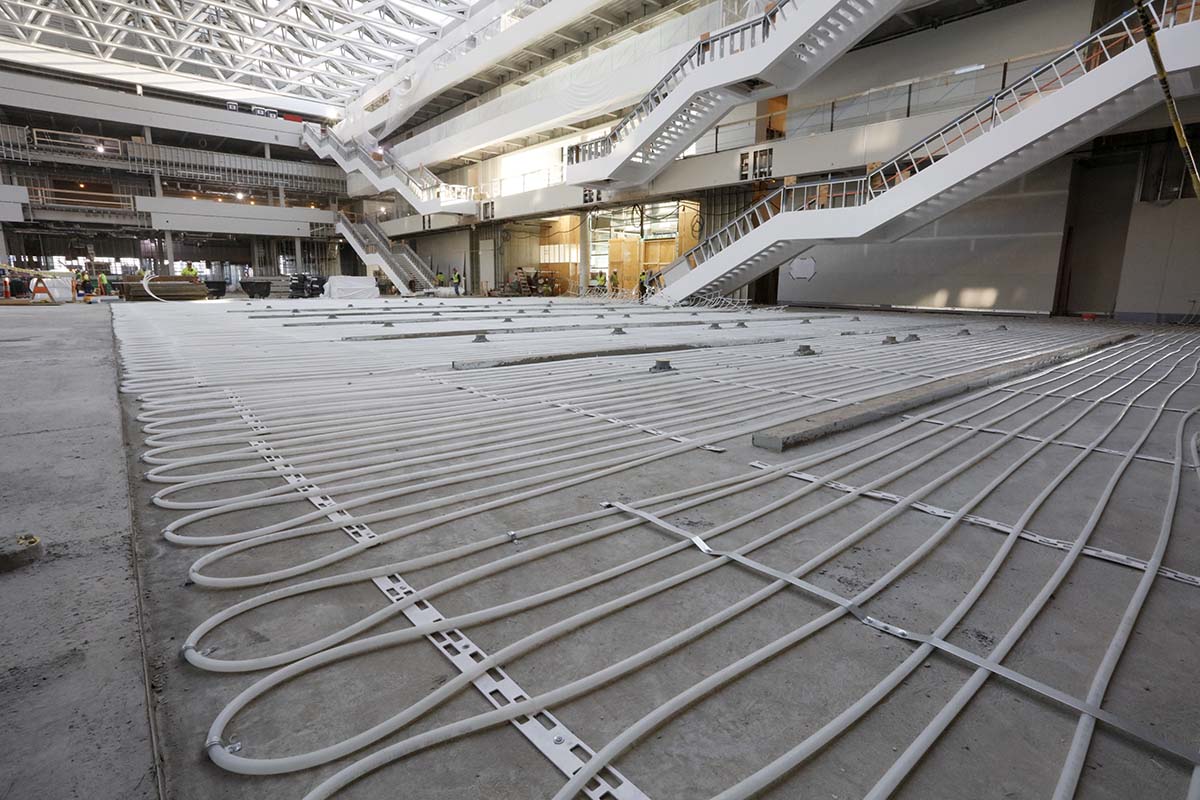
HEALTH EDUCATION: Radiant rollout mats were installed in the Cleveland Health Education Clinic in 2018. (Courtesy of Uponor)
Safety has also contributed to the growing number of radiant heating applications in commercial spaces. Over the past few years, Watts has seen an increase in the number of commercial projects that include snowmelt applications.
“Snowmelt systems greatly reduce risks and hazards associated with ice and winter elements,” said Kolyn “Coach” Marshall, senior applications instructor, instructional design, at Watts.
Snowmelt systems also reduce the need for people onsite to manually remove snow.
“In addition, snow-melting systems reduce the need for chemical ice removers,” Marshall said. “These chemicals tend to etch and dull surfaces such as concrete and brick pavers. When they’re tracked inside on the bottom of shoes, transferring the chemicals or damaging grit into interior spaces, carpets, and interior tile wear faster and require more frequent replacement.”
Types of Commercial Applications
Radiant heating doesn’t discriminate. It can be highly effective in a number of different commercial installs.
“Radiant can be utilized in any type of building, as long as it’s designed correctly, installed correctly, and controlled well,” Warren said. “So, it’s not building type driven, it’s more building owner and market location driven.”
And a lot of different types of commercial building owners are showing an increased interest in these systems.
“We are putting radiant systems in everything from office buildings to retail spaces, warehouses, health care facilities, and educational institutions; the list is endless,” Mick said. “Success is often measured by project goals and how the end result compares, but I would say especially in applications with large, open spaces that have consistent load profiles, radiant heating has proven to be particularly successful.”
When installed in a commercial space such as a healthcare facility, radiant heating provides a sterile and comfortable environment. In office buildings and educational institutions, radiant heating enhances occupant comfort and productivity, Mick said.
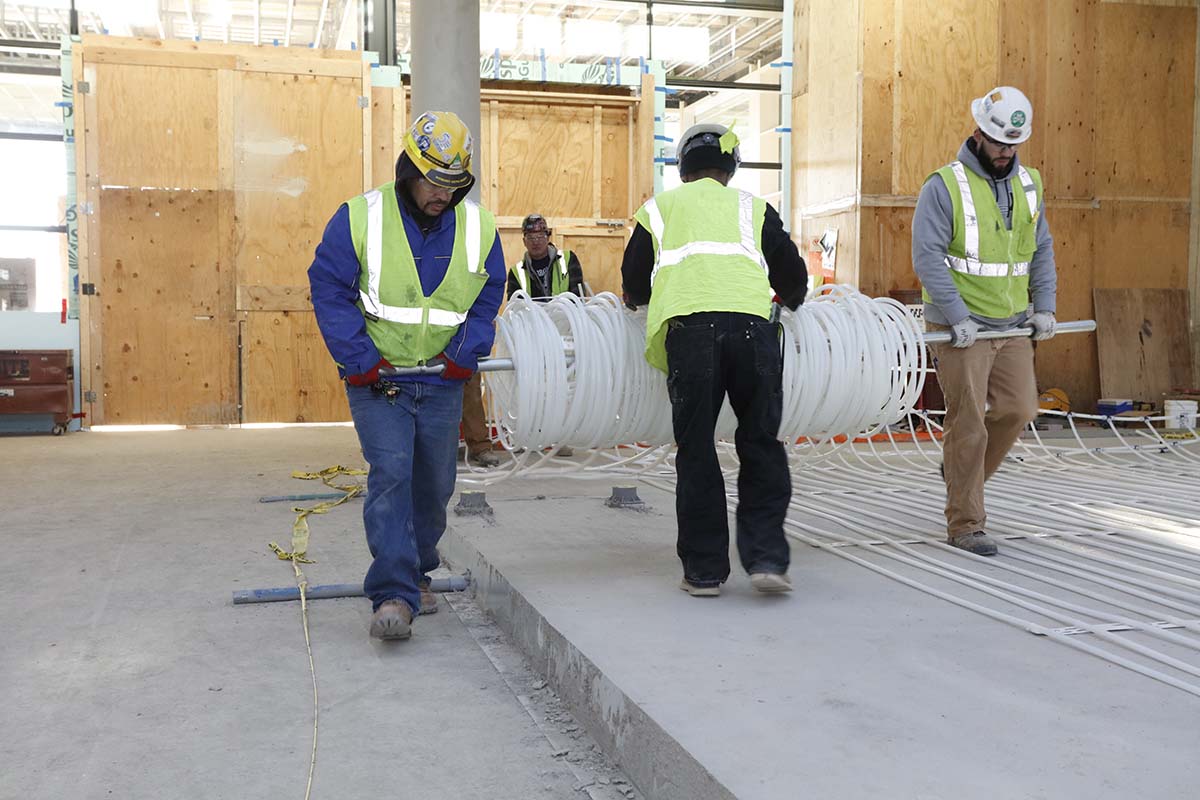
CLEAN AND COMFY: Radiant heating provides a sterile and comfortable environment, and enhances occupant comfort and productivity at Cleveland’s Health Education Campus. (Courtesy of Uponor)
“Warehouses and retail spaces benefit from the even heat distribution and energy savings that radiant systems offer.”
Marshall said Watts has seen an increase in commercial projects that include snowmelt applications in spaces like car wash facilities, retail outlets with high foot traffic, commercial parking garages/lots, walkways, and loading dock ramps. There has also been an uptick in root-zone use of turf-warming systems at golf courses.
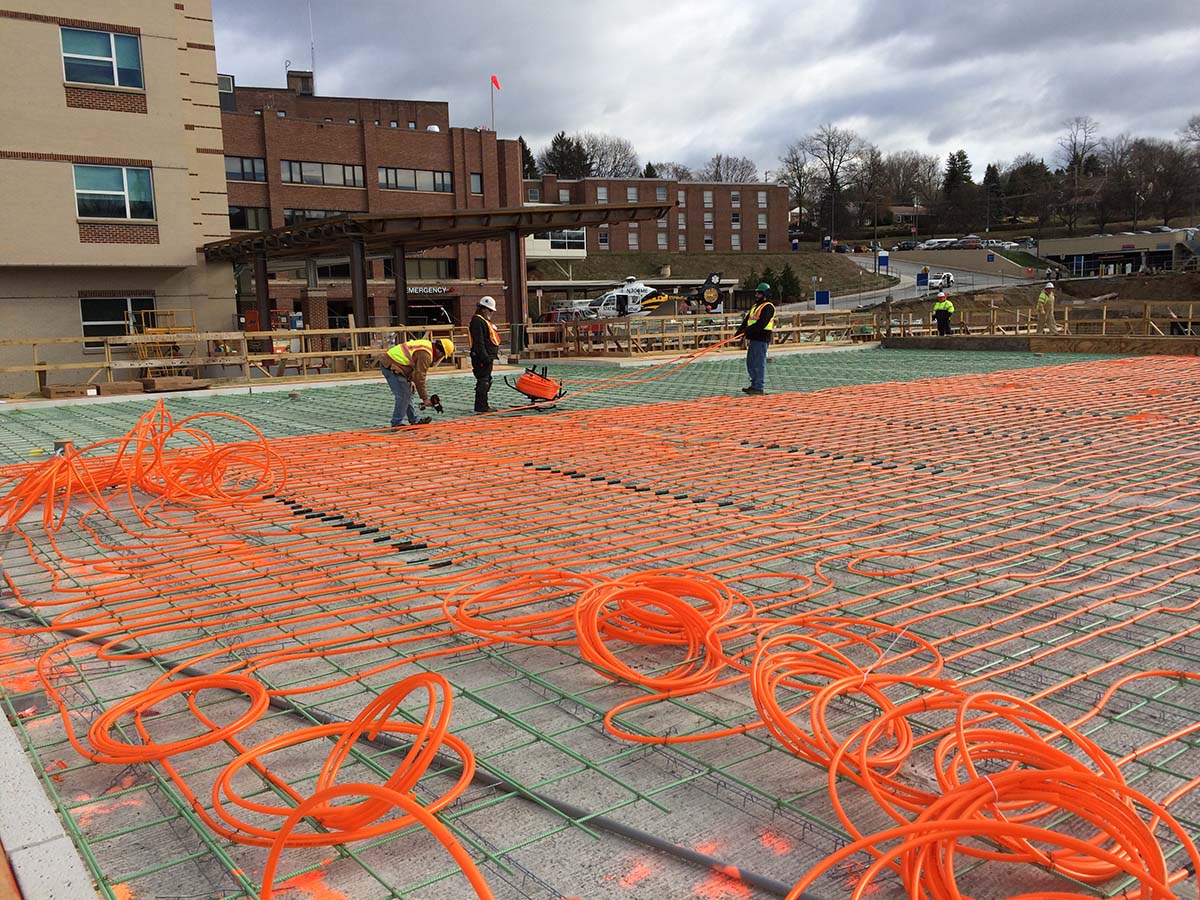
(Courtesy of Watts)
“One of the more popular industries, however, to migrate to snow-melting systems are hospitals and other emergency response services,” Marshall said. “Hospitals tend to see snowmelt applications in two key areas: the main ambulance entrance and helipads.”
Viega has also seen a rise in commercial snowmelt applications. One of the biggest places they’ve seen snowmelt take off is in prisons.
“One recently was a prison where the prisoners were brought down a ramp, and the [facility] had to have really high snowmelt because of liability … there can’t be any issues [transporting prisoners],” Warren said.
Challenges
There are a few key challenges when it comes to installing radiant heating in a commercial space.
Specific to snow-melting, one of these challenges is the need to place supply/return piping out to the snowmelt location, which means piping has to be run from the mechanical room (which is typically found inside the main building) to the exterior of the building, Marshall said.
“Once outside, we come across the second main hurdle — where to place the radiant manifolds,” Marshall said. “Manifolds need to remain accessible, but typically are hidden. Neither of these hurdles are insurmountable if the system is planned out ahead of time.”
Whatever the application is, the biggest challenge is ensuring radiant heating is installed correctly in the first place.
“You don’t want too long of loops for the water to be running through … you want to have your Delta T within the right range,” Warren said. “You don’t want to oversize your pump and your equipment — which tends to happen pretty frequently in the U.S., we like to oversize pretty much everything.”
But for the most part, it’s just starting from the beginning: having an accurate design, laying it out, and then correctly installing and controlling it, Warren said.
“Humidity can be a problem because of condensation and things like that — so if they’re in a very, very high humidity area, that’s something to be aware of,” Warren said.
Another challenge is ensuring that everyone on the job site is on the same page.
“Installing contractors and designers need to really understand everything going on in the floor,” Mick said. “As long as everyone understands what will go where, installation should be pretty smooth. Locating the manifold blocks is key. Again, early coordination should prevent this from being an issue.”
Advantages
When properly designed, coordinated, installed, and controlled, radiant heat can offer numerous advantages to commercial spaces. It can improve occupant comfort, increase energy efficiency, reduce operating costs and carbon footprint, and enhance safety.
“It provides superior comfort by delivering consistent and even heat distribution without the noise and airflow issues associated with forced-air systems,” Mick said. “This creates a more pleasant environment for occupants and contributes to better indoor air quality by minimizing the circulation of dust and allergens.”
Since radiant heating is highly energy-efficient, often its installation results in lower operating costs due to the reduced heat loss that comes from a radiant system, and the lower temperature requirements.
“Additionally, it is a versatile solution that can be installed in various floor types, walls, or ceilings, making it suitable for diverse commercial settings,” Mick said.
Radiant heating can also help better protect the community.
“Snow-melting systems have greatly reduced unwanted accidents due to slips and falls,” Marshall said. “They also reduce operational costs and have extended the longevity of paved surfaces and even the structures they serve.”
The upfront investment can make budget-conscious customers leery of saying yes to radiant projects. However, when they do, the benefits long outweigh the challenges.
“[Radiant heating] is applicable to anyone and everyone,” Warren said. “They just need to know how to work with it.”
Whether you require installation, repair, or maintenance, our technicians will assist you with top-quality service at any time of the day or night. Take comfort in knowing your indoor air quality is the best it can be with MOE heating & cooling services Ontario's solution for heating, air conditioning, and ventilation that’s cooler than the rest.
Contact us to schedule a visit. Our qualified team of technicians, are always ready to help you and guide you for heating and cooling issues. Weather you want to replace an old furnace or install a brand new air conditioner, we are here to help you. Our main office is at Kitchener but we can service most of Ontario's cities
Source link

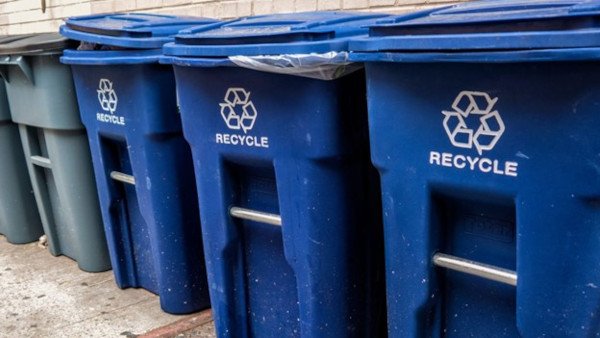

Add Comment